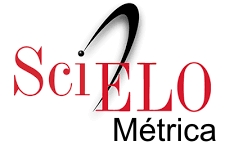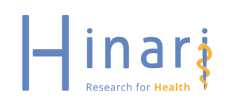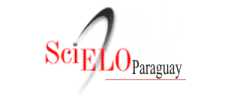Síndromes coronarios agudos
Abstract
Introducción: la identificación de los pacientes que tienen síndrome coronario agudo (SCA) dentro de la gran proporción de pacientes con sospecha de dolor cardiaco supone un reto diagnóstico para el Internista, sobre todo en los casos en que no hay síntomas claros o hallazgos electrocardiográficos típicos.
Objetivo: determinar las características clínicas y epidemiológicas de los pacientes con SCA
Materiales y métodos: estudio observacional de tipo retrospectivo, corte trasversal, en base a revisión de 30 historias clínicas de pacientes internados con SCA de la II Cátedra de Clínica Médica, Hospital de Clínicas, durante desde el año 2013.
Resultados: hubo un predominio de varones (57%) y procedencia del Departamento Central (76%). Los factores de riesgo cardiovascular más frecuentes fueron la hipertensión arterial (HTA) (80%) y diabetes mellitus (DM) (50%). La clasificación Killip más frecuente al ingreso en Urgencias fue I (63%). Predominó el Síndrome Coronario Agudo sin Elevación del Segmento ST (SCASEST): 22 casos (73%), con edad media 64 años y 11 días de internación. La presentación clínica dominante fue la angina típica (59%). Los diagnósticos finales más frecuentes fueron angina inestable (59%) e infarto agudo (27%). El TIMI predominante fue moderado (50%) y alto (36,36%). La mortalidad fue 9%. El otro cuadro clínico (n 8) fue el Síndrome Coronario Agudo con Elevación del Segmento ST (SCACEST), con edad media 67 años y tiempo medio de internación 13 días. Todos éstos presentaron angina típica, el diagnóstico final fue infarto agudo de miocardio en 75% y recibieron una mitad con tratamiento médico y la otra mitad tratamiento de reperfusión con fibrinolíticos, sobre todo alteplasa. La mortalidad fue nula en este grupo.
Conclusión: predominó el sexo masculino, la mayoría con HTA y DM. El SCA más frecuente fue SCASEST (75%), que se presentó en sujetos más jóvenes y con mortalidad 9%.
References
Anderson JL, Adams CD, Antman EM, Bridges CR, Califf RM, Casey DE Jr, et al. 2012 ACCF/AHA focused update incorporated into the ACCF/AHA 2007 guidelines for the management of patients with unstable angina/non-ST-elevation myocardial infarction: a report of the American College of Cardiology Foundation/American Heart Association Task Force on Practice Guidelines. J Am Coll Cardiol. 2013 Jun 11; 61(23): e179-347.
Sánchez Torres N, Pérez del Todo JM, Del Pino Sánchez E, Martínez García G, Suárez Rivero A, Guevara Mirabal G. Caracterización por sexo de los pacientes con síndrome coronario agudo con elevación del segmento ST sometidos a intervencionismo coronario. Rev Cubana Cardiol Cir Cardiovasc. 2011; 17(3): 225-33.
Campeau L. The Canadian Cardiovascular Society grading of angina pectoris revisited 30 years later. Can J Cardiol. 2002 Apr; 18(4): 371-9.
van Domburg RT, van Miltenburg-van Zijl AJ, Veerhoek RJ, Simoons ML. Unstable angina: good long-term outcome after a complicated early course. J Am Coll Cardiol. 1998 Jun; 31(7): 1534-9.
Canto JG, Fincher C, Kiefe CI, Allison JJ, Li Q, Funkhouser E, et al. Atypical presentations among Medicare beneficiaries with unstable angina pectoris. Am J Cardiol. 2002 Aug 1; 90(3): 248-53.
Culić V, Eterović D, Mirić D, Silić N. Symptom presentation of acute myocardial infarction: influence of sex, age, and risk factors. Am Heart J. 2002 Dec; 144(6): 1012-7.
Brieger D, Eagle KA, Goodman SG, Steg PG, Budaj A, White K, et al. Acute coronary syndromes without chest pain, an underdiagnosed and undertreated high-risk group: insights from the Global Registry of Acute Coronary Events. Chest. 2004 Aug; 126(2): 461-9.
Lev EI, Battler A, Behar S, Porter A, Haim M, Boyko V, Hasdai D. Frequency, characteristics, and outcome of patients hospitalized with acute coronary syndromes with undetermined electrocardiographic patterns. Am J Cardiol. 2003 Jan 15; 91(2): 224-7.
Diercks DB, Peacock WF, Hiestand BC, Chen AY, Pollack CV Jr, Kirk JD et al. Frequency and consequences of recording an electrocardiogram >10 minutes after arrival in an emergency room in non-ST-segment elevation acute coronary syndromes (from the CRUSADE Initiative). Am J Cardiol. 2006 Feb 15; 97(4): 437-42.
Thygesen K, Alpert JS, White HD, Jaffe AS, Apple FS, Galvani M, et al. Universal definition of myocardial infarction. Circulation. 2007 Nov 27; 116 (22): 2634-53.
Okamatsu K, Takano M, Sakai S, Ishibashi F, Uemura R, Takano T, Mizuno K. Elevated troponin T levels and lesion characteristics in non-ST-elevation acute coronary syndromes. Circulation. 2004 Feb 3;109(4):465-70.
Keller T, Zeller T, Peetz D, Tzikas S, Roth A, Czyz E, et al. Sensitive troponin I assay in early diagnosis of acute myocardial infarction. N Engl J Med. 2009 Aug 27; 361(9): 868-77.
Reichlin T, Hochholzer W, Bassetti S, Steuer S, Stelzig C, Hartwiger S, et al. Early diagnosis of myocardial infarction with sensitive cardiac troponin assays. N Engl J Med. 2009 Aug 27; 361(9): 858-67.
Giannitsis E, Becker M, Kurz K, Hess G, Zdunek D, Katus HA. High-sensitivity cardiac troponin T for early prediction of evolving non-ST-segment elevation myocardial infarction in patients with suspected acute coronary syndrome and negative troponin results on admission. Clin Chem. 2010 Apr; 56(4): 642-50
Weber M, Bazzino O, Navarro Estrada JL, de Miguel R, Salzberg S, et al. Improved diagnostic and prognostic performance of a new high-sensitive troponin T assay in patients with acute coronary syndrome. Am Heart J. 2011 Jul; 162(1): 81-8.
Omland T, de Lemos JA, Sabatine MS, Christophi CA, Rice MM, Jablonski KA, et al. A sensitive cardiac troponin T assay in stable coronary artery disease. N Engl J Med. 2009 Dec 24; 361(26): 2538-47.
de Lemos JA, Drazner MH, Omland T, Ayers CR, Khera A, Rohatgi A, et al. Association of troponin T detected with a highly sensitive assay and cardiac structure and mortality risk in the general population. JAMA. 2010 Dec 8; 304(22): 2503-12.
Otsuka T, Kawada T, Ibuki C, Seino Y. Association between high-sensitivity cardiac troponin T levels and the predicted cardiovascular risk in middle-aged men without overt cardiovascular disease. Am Heart J. 2010 Jun; 159(6): 972-8.
Thygesen K, Mair J, Katus H, Plebani M, Venge P, Collinson P, et al. Recommendations for the use of cardiac troponin measurement in acute cardiac care. Eur Heart J. 2010 Sep; 31(18): 2197-204.
Apple FS, Murakami MM, Pearce LA, Herzog CA. Predictive value of cardiac troponin I and T for subsequent death in end-stage renal disease. Circulation. 2002 Dec 3; 106(23): 2941-5.
Aviles RJ, Askari AT, Lindahl B, Wallentin L, Jia G, Ohman EM, et al. Troponin T levels in patients with acute coronary syndromes, with or without renal dysfunction. N Engl J Med. 2002 Jun 27; 346(26): 2047-52.
Hamm CW, Goldmann BU, Heeschen C, Kreymann G, Berger J, Meinertz T. Emergency room triage of patients with acute chest pain by means of rapid testing for cardiac troponin T or troponin I. N Engl J Med. 1997 Dec 4; 337(23): 1648-53.
Wu AH, Apple FS, Gibler WB, Jesse RL, Warshaw MM, Valdes R Jr. National Academy of Clinical Biochemistry Standards of Laboratory Practice: recommendations for the use of cardiac markers in coronary artery diseases. Clin Chem. 1999 Jul; 45(7): 1104-21.
Than M, Cullen L, Reid CM, Lim SH, Aldous S, Ardagh MW, et al. A 2-h diagnostic protocol to assess patients with chest pain symptoms in the Asia-Pacific region (ASPECT): a prospective observational validation study. Lancet. 2011 Mar 26; 377(9771): 1077-84.
Cheitlin MD, Armstrong WF, Aurigemma GP, Beller GA, Bierman FZ, Davis JL, et al. ACC/AHA/ASE 2003 guideline update for the clinical application of echocardiography: summary article: a report of the American College of Cardiology/American Heart Association Task Force on Practice Guidelines (ACC/AHA/ASE Committee to Update the 1997 Guidelines for the Clinical Application of Echocardiography). Circulation. 2003 Sep 2; 108(9): 1146-62.
Nucifora G, Badano LP, Sarraf-Zadegan N, Karavidas A, Trocino G, Scaffidi G, et al. Comparison of early dobutamine stress echocardiography and exercise electrocardiographic testing for management of patients presenting to the emergency department with chest pain. Am J Cardiol. 2007 Oct 1; 100(7): 1068-73
Kwong RY, Schussheim AE, Rekhraj S, Aletras AH, Geller N, Davis J, et al. Detecting acute coronary syndrome in the emergency department with cardiac magnetic resonance imaging. Circulation. 2003 Feb 4; 107(4): 531-7.
Udelson JE, Beshansky JR, Ballin DS, Feldman JA, Griffith JL, Handler J, et al. Myocardial perfusion imaging for evaluation and triage of patients with suspected acute cardiac ischemia: a randomized controlled trial. JAMA. 2002 Dec 4; 288(21): 2693-700.
Hoffmann U, Bamberg F, Chae CU, Nichols JH, Rogers IS, Seneviratne SK, et al. Coronary computed tomography angiography for early triage of patients with acute chest pain: the ROMICAT (Rule Out Myocardial Infarction using Computer Assisted Tomography) trial. J Am Coll Cardiol. 2009 May 5; 53(18): 1642-50
Rubinshtein R, Halon DA, Gaspar T, Jaffe R, Karkabi B, Flugelman MY, et al. Usefulness of 64-slice cardiac computed tomographic angiography for diagnosing acute coronary syndromes and predicting clinical outcome in emergency department patients with chest pain of uncertain origin. Circulation. 2007 Apr 3; 115(13): 1762-8.
Meijboom WB, Mollet NR, Van Mieghem CA, Weustink AC, Pugliese F, van Pelt N, et al. 64-Slice CT coronary angiography in patients with non-ST elevation acute coronary syndrome. Heart. 2007 Nov; 93(11): 1386-92.
Hollander JE, Chang AM, Shofer FS, Collin MJ, Walsh KM, McCusker CM, Baxt WG, Litt HI. One-year outcomes following coronary computerized tomographic angiography for evaluation of emergency department patients with potential acute coronary syndrome. Acad Emerg Med. 2009 Aug; 16(8): 693-8.

















